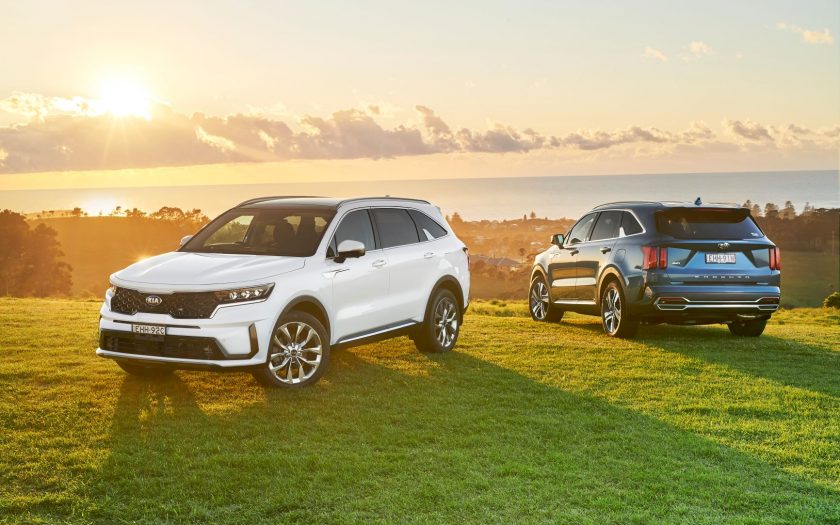KIA’S BIG SUV, THE SORENTO has proven a winner with the over-50s nomads and the new model is set to continue that record.
Advancing the safety and comfort standards the outgoing model set for the large SUV class for space, efficiency and quality, it sits at the heart of Kia’s reinvigorated local SUV line-up, which also includes the Seltos, Sportage and soon to arrive Stonic.
“The outgoing Sorento was a game-changer in the Australian market with previously untapped safety and convenience levels in the segment – and the all-new model continues to take that story forward,” Kia Motors Australia Chief Operating Officer Damien Meredith said.
“Across the four trim levels we believe the Sorento will meet the needs, and exceed the expectations, of anyone shopping in the seven-seat SUV market.”
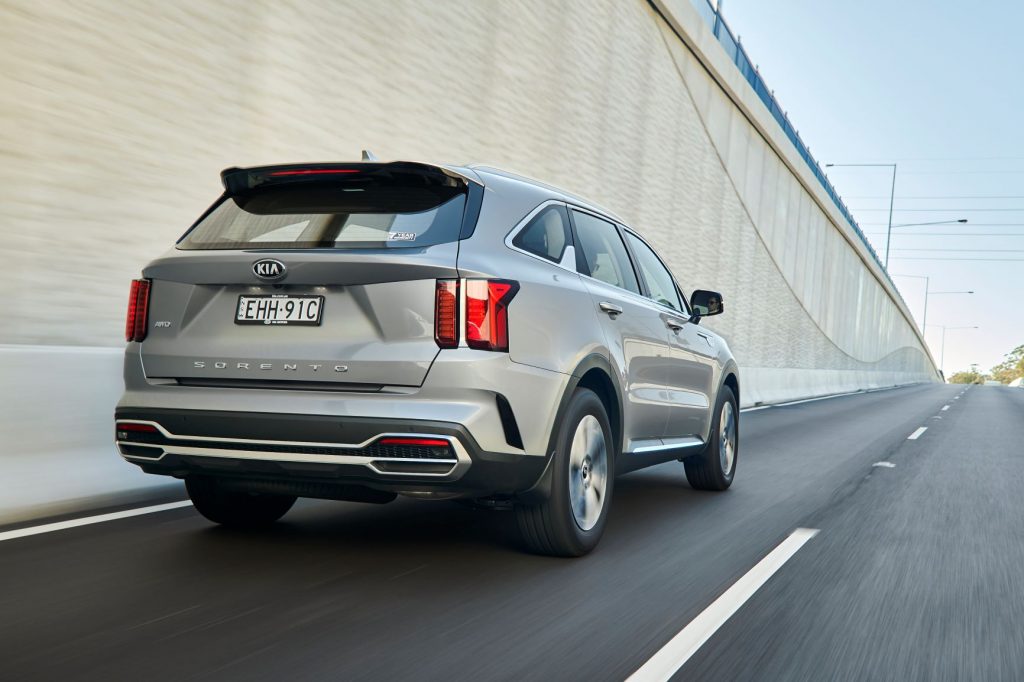
Mr Meredith said that Sorento’s evolution over the last 18 years echoes that of the Kia brand as a whole.
“While the car was initially launched in 2002 as a utilitarian body on frame all-terrain vehicle, it quickly evolved into a more luxurious monocoque construction and now, in its fourth generation, Sorento has been transformed into something once again more desirable.”
The Sorento’s exterior design has been redefined with sharper lines, high-tech details, and elongated proportions. Inside, its attractive cabin continues Kia’s move towards premium-quality materials, cutting-edge infotainment technologies.
The new Sorento is the first vehicle to be based on Kia’s larger new-generation ‘N3’ SUV platform. Paired with a larger body to maximise cargo and luggage space, the platform ensures the Sorento is one of the most versatile and spacious three-row SUVs on the road.
Furthermore, the Sorento’s innovative interior packaging means it can offer all this while accommodating Kia’s new ‘Smartstream’ powertrains. As a result, the new model offers greater fuel efficiency, lower emissions, and higher performance than its predecessors.
This will be Kia’s most high-tech car ever, thanks to its progressive connectivity, driver assistance and infotainment technologies. Its user-friendly twin digital displays deliver advanced graphics and new features.
A mainstay of Kia’s global line-up, more than three million Sorento models have been sold worldwide since it was launched in 2002. Since launching in Australia in January 2003, there have been almost 44,000 Sorentos sold.
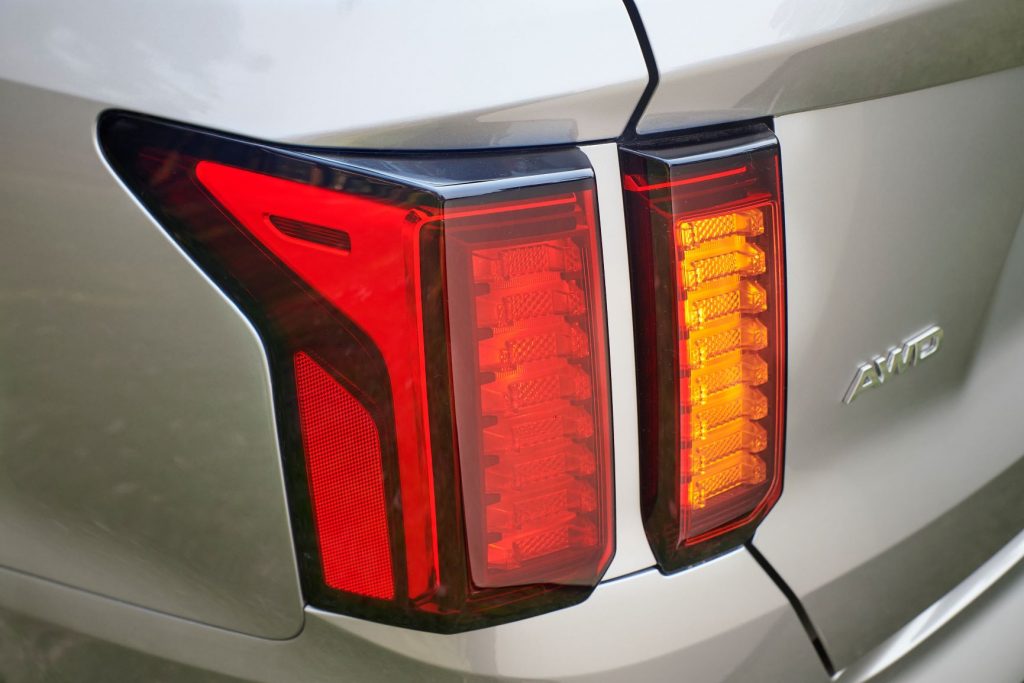
Exterior design
The new model is the result of a collaborative design effort between all three studios within Kia’s worldwide design network in Korea, Europe and North America.
Its bodywork incorporates sharp lines and creases – noticeably more sculpted than its more round-edged predecessor, with more contemporary geometric details and more swept-back, elongated proportions.
The front of the Sorento evolves with a new interpretation of Kia’s hallmark ‘tiger nose’ grille, displaying a wider shape which organically wraps around the integrated headlamps on each side. The headlamps themselves feature a new ‘tiger eye’ LED daytime running light.
This sharper, more assertive appearance is complemented by a wide, rectangular lower air intake, bookended by wing-shaped air curtains to channel air around the car. A sharp bumper lip is also capped with a skid plate, enhancing its robust appearance.
The new model is 1900mm wide, 10mm wider than the third-generation Sorento.
The new model is 10mm longer than its predecessor (now 4810mm), yet it features shorter front and rear overhangs. The additional length is found in the wheelbase (a result of the Sorento’s new platform), which has grown by 35mm to 2815mm.
This makes it look longer and ‘faster’, despite being 10mm taller. It also extends the length of the bonnet, drawing the A-pillar 30mm further back from the front axle.
The trailing edge of the bonnet wraps around the front wings and turns into a single, strong character line which extends along the side of the Sorento and into the rear lamps.
It retains the characteristic wide D-pillar, substantial bodywork and clad wheel arches that have defined all three generations to-date. It also adopts certain other design features from more recent Kia models, including a new ‘shark fin’ styling element on its C-pillar, and sculpted body surfaces with sharp creases.
Inspired by the 2020 World Car of the Year Telluride, the Sorento adopts new vertical tail lamps which wrap around the side of the body. Sharper lines in the bodywork echo the straight, technical appearance of the front of the car, with horizontal shapes used to make the vehicle appear wider and more imposing on the road.
Trim on the sporty lower rear bumper mimics the appearance of dual tailpipes and, like the front, features a skid plate.
The fourth-generation model follows other recent Kia models, such as Telluride and ProCeed, with the Sorento model name displayed centrally across the tailgate. A subtle integrated spoiler also conceals the rear wiper, resulting in a less fussy design and enhancing the driver’s view out of the back.
The new Sorento will be available in Australia with a choice of seven exterior paint finishes – one standard colour in Clear White and six Premium Paints ($695 option); Mineral Blue (a new colour), Snow White Pearl, Steel Grey, Silky Silver, Aurora Black and Gravity Blue.
Importantly, and something that’s becoming increasingly rare, all models will have a full-size spare in 17-inch, 18-inch, 19-inch or 20-inch depending on trim level.
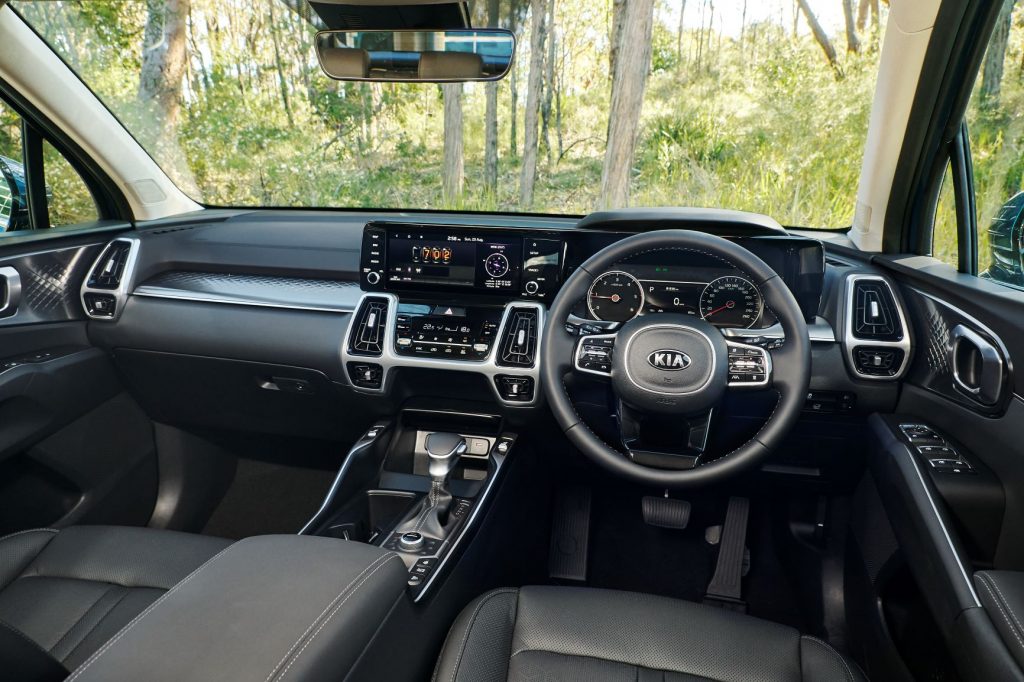
Interior design
The interior of the fourth-generation Sorento represents a step-change in quality and design for Kia cabins. From the first-generation 2002 Sorento, which provided occupants with a practical, robust and utilitarian space (Kia-speak for “basic”), the Sorento today provides owners with something altogether more striking, desirable and comfortable.
The intuitive, tech-oriented cabin of the new Sorento is fitted with premium-quality materials and cutting-edge infotainment. At the same time, it retains the spaciousness and versatility that has characterised the Sorento over its 18-year existence.
The attractive, upscale cabin introduces a sophisticated next-generation design and in the GT-Line this is based around twin digital displays in the dashboard.
The 12.3-inch digital driver instrument cluster is twinned with a 10.25-inch touchscreen infotainment and navigation system at the centre of the dashboard.
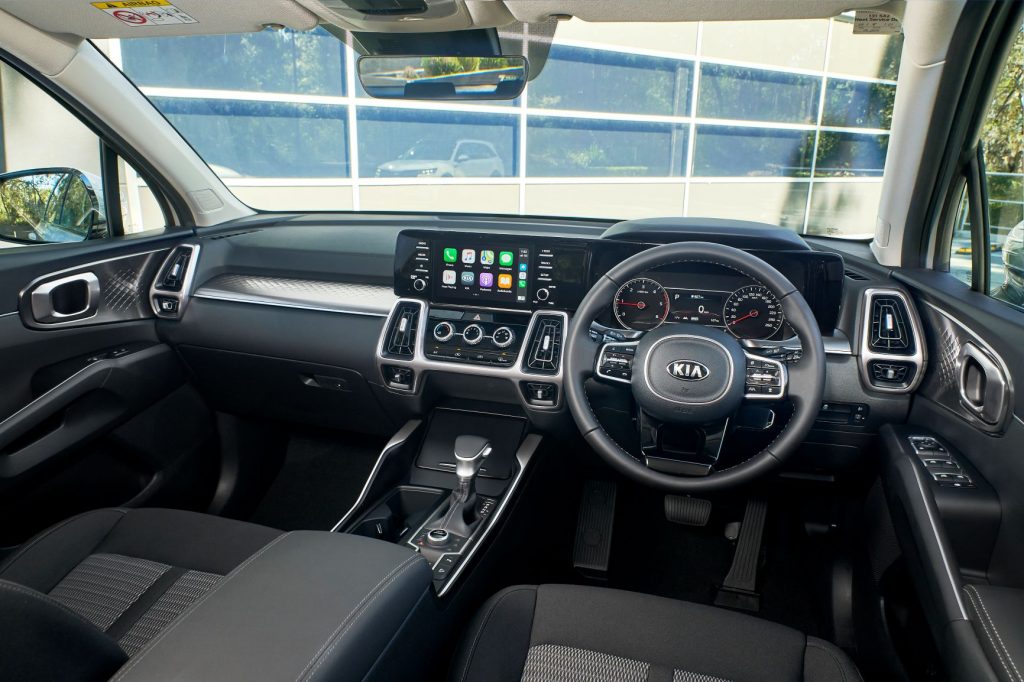
The car’s many functions can also be controlled with new capacitive buttons on either side of the screen, which also feature further down the dashboard for the climate control system. The focal point of the dashboard is the eye-catching vertical ventilation stack, with a chrome-effect surround that extends onto the centre console below.
The cabin of the new Sorento subtly integrates a range of other technologies, including a Mood Lighting system on the GT-Line trim. This emits soft ambient downlighting from beneath the dashboard and door trim. A wireless smartphone charger also sits at the base of the centre console, while a powerful BOSE surround-sound system is also available.
Material quality is enhanced, with a cabin that blends metallic trim, leather upholstery, and embossed satin-effect surfaces.
In Australia the Sorento will be available (grade dependent) with embossed black cloth, leather appointed black cloth and black quilted Nappa leather appointed seats.
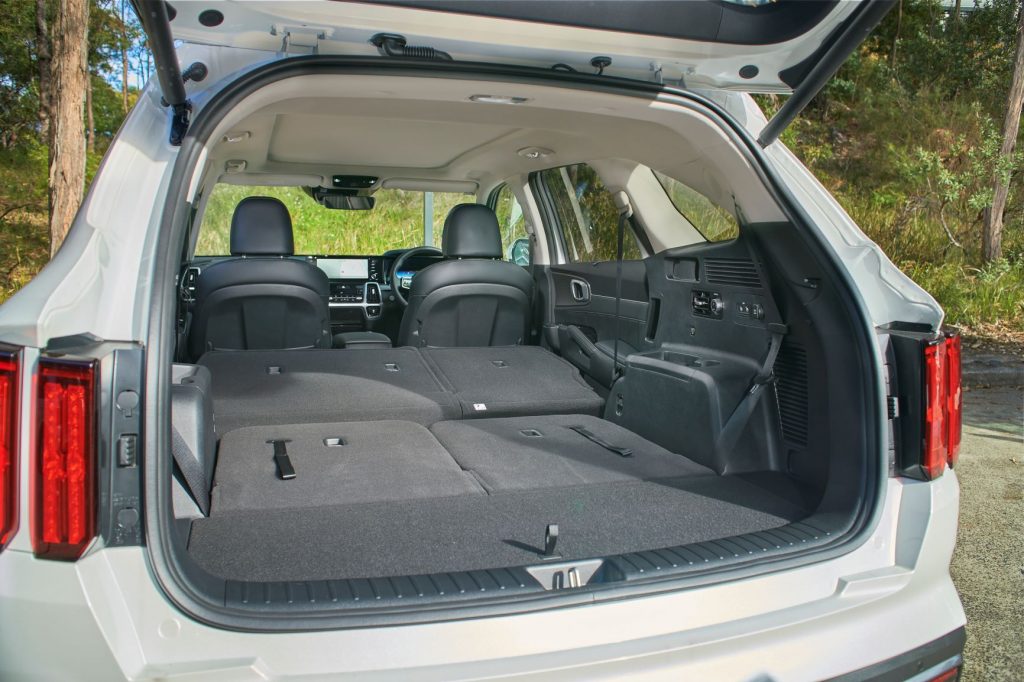
Packaging and versatility
The new Sorento is based on Kia’s new third-generation ‘N3’ SUV platform, providing superior space for people and cargo through more intelligent packaging. The result is one of the most versatile and spacious cars in its class.
The new platform is based around a compact engine bay structure and shorter front and rear overhangs, with a 35mm longer wheelbase creating greater cabin space between the axles.
This enables the new model’s stylish and more swept-back design and as a result, the Sorento offers generous space for up to seven passengers as well as one of the largest luggage capacities in its class up to 2011 litres (2nd and 3rd row folded) or 616 litres (3rd row folded).
This means the car can accommodate five people in comfort, and a significant amount of luggage. With all seven seats in place, boot space is also increased by 32 percent compared to its predecessor, to 187 litres. Controls in the side wall of the boot also let users fold down the second-row seat backs remotely at the touch of a button.
For passengers, the new platform maximises space in all three rows, offering more head-, leg- and shoulder-room than many rivals. In particular, the new platform has created a significant amount of extra legroom for first- and second-row occupants, as well as more headroom for third-row passengers.
The Sorento has always been popular with customers looking for practical third-row seating, and the new model makes life even easier for rear passengers.
Aided by the platform’s longer wheelbase, the second-row seats now slide up to 45mm further, creating a wider point of entry to the third row with more space for feet and legs. There is also a new grab handle built into the interior trim inside the C-pillar, giving third-row passengers something to hold on to as they climb aboard.
The third-row armrest has also been extended by 100mm for greater elbow support, while incorporating a cupholder and smartphone tray.
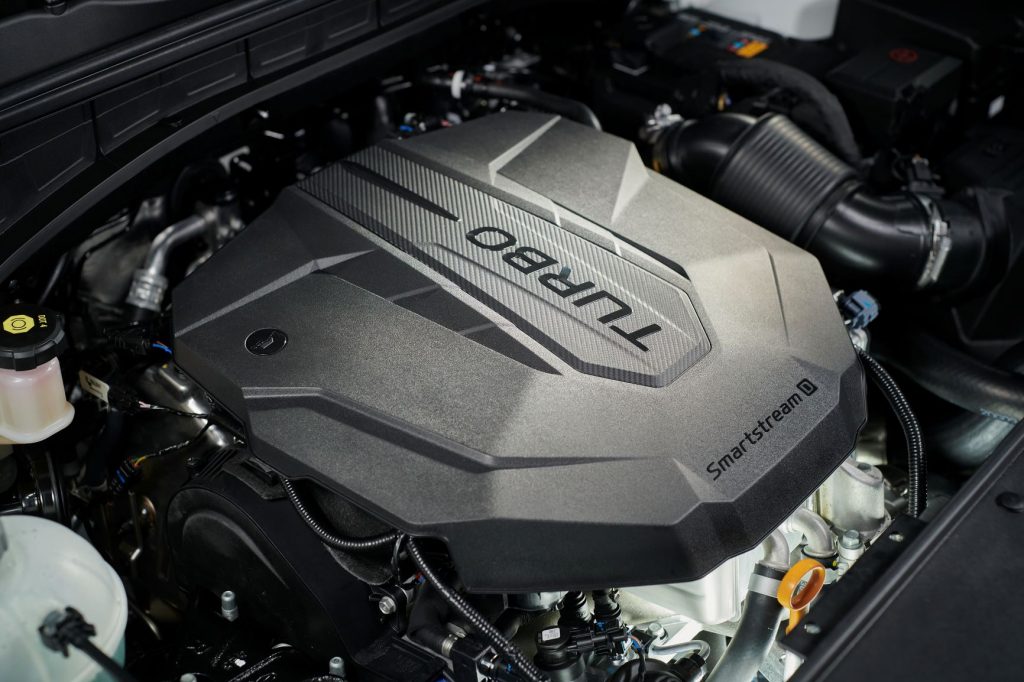
Powertrains: ‘Smartstream’ diesel engine and eight-speed wet double-clutch
The Sorento’s new four-cylinder 2.2-litre ‘Smartstream’ diesel engine will debut in Australia in the Sorento, producing 148kW and 440Nm torque. With a new aluminium block replacing the cast iron block of its predecessor, the new engine is 19.5kg lighter compared to that in the third-generation Sorento.
Furthermore, it is paired with Kia’s new eight-speed wet double-clutch transmission (8DCT). Designed to offer the smooth shifting characteristics of a conventional automatic, the 8DCT enhances fuel efficiency over a conventional eight-speed automatic by up to 15 percent depending on application.
Also available in Australia will be the revised and refined Smartstream Lambda III 3.5-litre V6 petrol engine producing 200kW and 332Nm. The V6 engines will drive the front wheels through Kia’s proven 8-speed automatic gearbox.
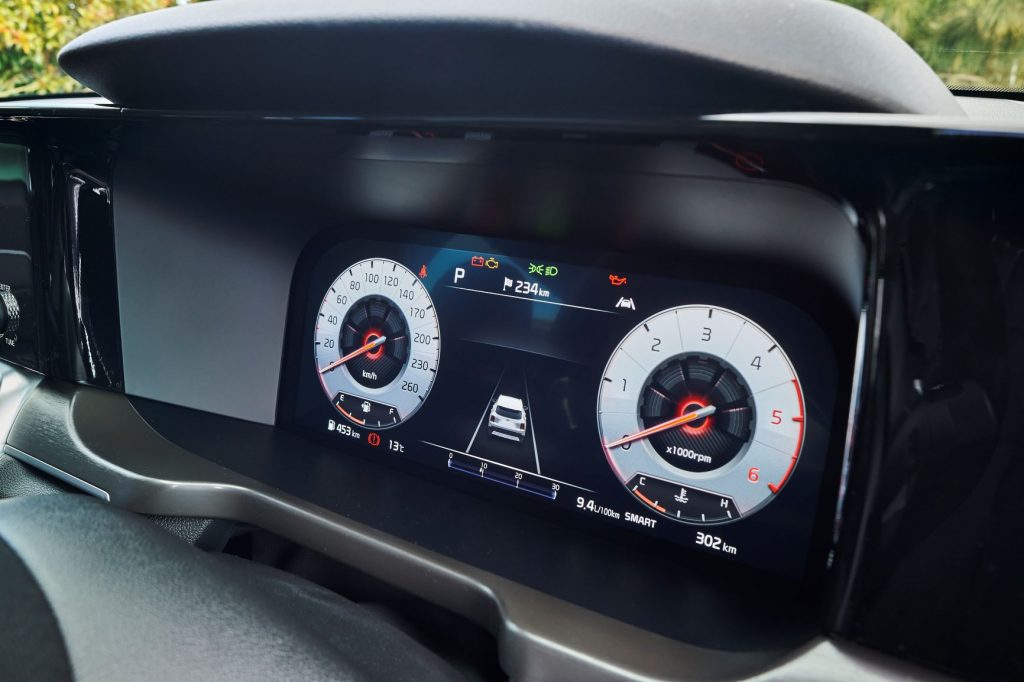
Ride and handling
The first-generation Sorento (2002-2009) was based on a ladder-frame chassis, with the second-generation model (2009-2015) – the first monocoque-based Sorento – marking a change in the car’s on-road behaviour. Now, the new ‘N3’ platform represents a similar leap forward, engineered to maximise driving stability in all environments.
The car now delivers an even more assured, comfortable ride and more satisfying, enjoyable driving character than its predecessor, aided by heavily revised fully-independent suspension.
Engineers have sought to reduce the effect that road surface imperfections have on the body, and to reduce noise and vibrations through the suspension, while also improving body control and steering responses under cornering. This has been achieved with a series of geometry changes and new components, as well as improvements to the structure of the suspension system.
The 35mm longer wheelbase also contributes to an overall improvement in cruising comfort, while the new bodyshell – with a four percent average increase to tensile strength throughout its structure – results in lower body vibrations.
Like all Kia models, the Sorento’s on-road capability and comfort has been optimised to best suit the tastes of Australian drivers through the local tuning program. With initial testing at Kia’s R&D Centre in South Korea, the suspension settings are refined on Australian roads before production sign-off.
New for the fourth generation, the latest Sorento model also offers enhanced all-terrain capability over its forebears thanks to a new Terrain Mode in the diesel models. Terrain Mode will assist the driver in gaining maximum performance in mud, snow and sand within the parameters of the car’s optimum capability.
With each mode selectable from a dial on the centre console, Terrain Mode carefully controls the car’s standard electronic stability control (ESC), as well as the distribution of torque to all four wheels. It also adapts transmission shift times to help the car find and maintain traction in a range of driving environments.
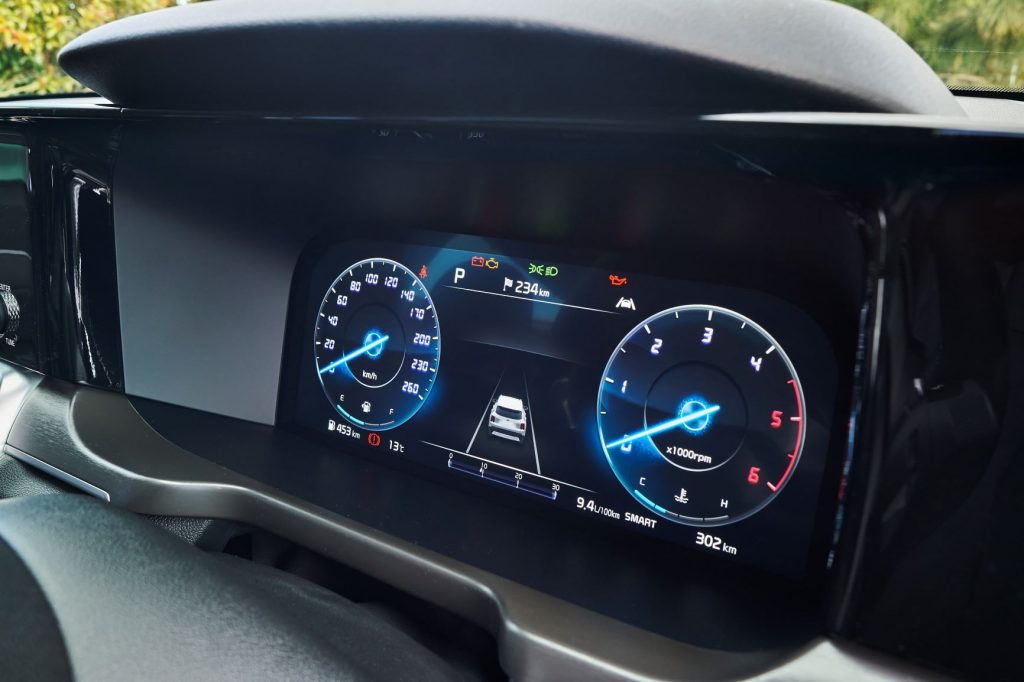
The most high-tech Kia ever: new connectivity and infotainment features
The Sorento is the most high-tech Kia car ever made, thanks to a suite of technologies that enhance safety, connectivity and infotainment.
The new Sorento incorporates Kia’s latest 10.25-inch touchscreen infotainment system (Sport, Sport+ and GT-Line), offering audio-visual navigation, and a new 12.3-inch high-resolution digital instrument cluster for the top-spec GT-Line. The entry-level S features an 8-inch colour LCD touch screen, and along with Sport and Sport+, a 4.2-inch colour TFT supervision instrument cluster.
The infotainment system also allows Bluetooth smartphone pairing for two phones concurrently, enabling separate phones to be used for, for instance, phone calls and music, while front passengers can also plug in their mobile devices via three USB chargers.
For second-row passengers, two USB charging sockets are integrated into the backs of the two front seats (Sport+ & GT-Line only), with a third found at the rear of the front-row centre console. Both third-row passengers also have their own 12V Power Outlet charging points (whilst Sport+ and GT-Line offers 2 additional USB chargers), meaning all seven passengers can keep their mobile device charged – the perfect measure to maintain harmony in a full car during longer journeys.
The Sorento GT-Line will come standard with a colour head-up display, which projects driving information onto the base of the windscreen in the driver’s line of sight. The system displays alerts from the car’s numerous driver assistance technologies, details of vehicle speed, and turn-by-turn navigation instructions.
A powerful 12-speaker BOSE surround-sound audio system is standard in the GT-Line, delivering a more immersive sound to all three rows. The S, Sport and Sport+ trims will come with a quality 6-speaker sound system.
The cabin’s Mood Lighting system (GT-Line) lets users tailor the cabin even further, with the interior illuminated in one of seven pre-set ‘core’ colours selected specifically by Kia interior designs, or from a full gamut of 64 colours.
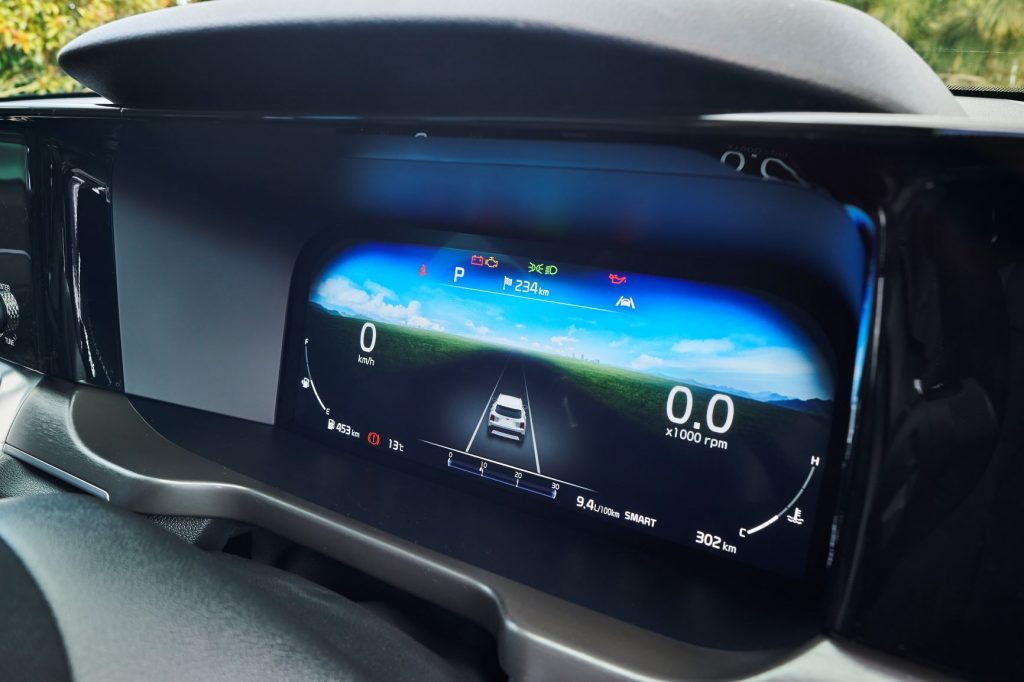
Advanced driver assistance systems with new Remote Smart Parking Assist
The Sorento offers improved levels of active and passive safety thanks to an enhanced range of driver assistance systems.
The ADAS range in the new Sorento includes Kia’s Autonomous Emergency Braking (AEB) technology with pedestrian, cyclist and vehicle detection. This also detects oncoming traffic when making a turn at a junction.
The Sorento is also available with Blind-spot View Monitor (GT-Line only), Surround View Monitor (GT-Line) and Blind-spot Collision-avoid Assist, Advanced Smart Cruise Control, Lane Following Assist and Driver Attention Warning.
Kia’s ‘level two’ autonomous driving technology, Lane Following Assist (LFA), controls acceleration, braking and steering depending on the vehicles in front. LFA operates between speeds of 0 and 180kph, using camera and radar sensors to maintain a safe distance from the car in front, while monitoring road markings to keep the Sorento in the centre of its lane.
The new Sorento also features a Rear View Monitor (RVM) with Reverse Parking Collision-Avoidance Assist (PCA) (GT-Line only), and Rear Cross-traffic Collision-avoidance Assist (RCCA).
In addition, it is also the first Kia available with the company’s new Remote Smart Parking Assist (RSPA) (GT-Line only), which enables drivers to move their car autonomously out of a front-and-back parking space remotely with their key fob. This is designed to make it easier for passengers to get in and out of the car in tight parking spaces or if another driver parks too close to access any of the doors.
RSPA brakes the Sorento automatically if it detects another car, cyclist or pedestrian behind the vehicle or crossing behind it. The Sorento’s Safe Exit Assist feature also prevents rear doors from opening if the vehicle detects a hazard approaching from behind, such as a cyclist or another vehicle.
The Sorento is fitted with seven airbags (dual front airbags, dual front seat-mounted side airbags, side curtain airbags with rollover sensor, and front centre airbag). The front centre airbag, a segment first for Australia, provides additional head protection for front-seat occupants and is designed to prevent their heads coming into contact during a collision.
All Sorento models are equipped as standard with Kia’s Vehicle Stability Management (VSM) and Electronic Stability Control systems to help drivers maintain control under braking and cornering.
The new Sorento also implements Kia’s first Multi-collision Brake system, which enables the Sorento to mitigate the severity of secondary collisions. It automatically applies vehicle brakes when the airbags have been deployed after an initial collision, further protecting occupants from secondary frontal or side impacts.
The Sorento’s body is made up of a blend of steel and aluminium, maximising torsional rigidity while keeping weight low. The bodyshell construction features a higher proportion of Advanced High-Strength Steel and hot-stamped steel components than its predecessor.
The blend of high-strength steel enhances occupant safety, giving it torsional rigidity unmatched in the Sorento’s segment – yet the strengthening to the bodyshell construction renders it 5.6 percent (54kg) lighter than that of its predecessor. Furthermore, the more rigid bodyshell reduces road vibrations in everyday use.
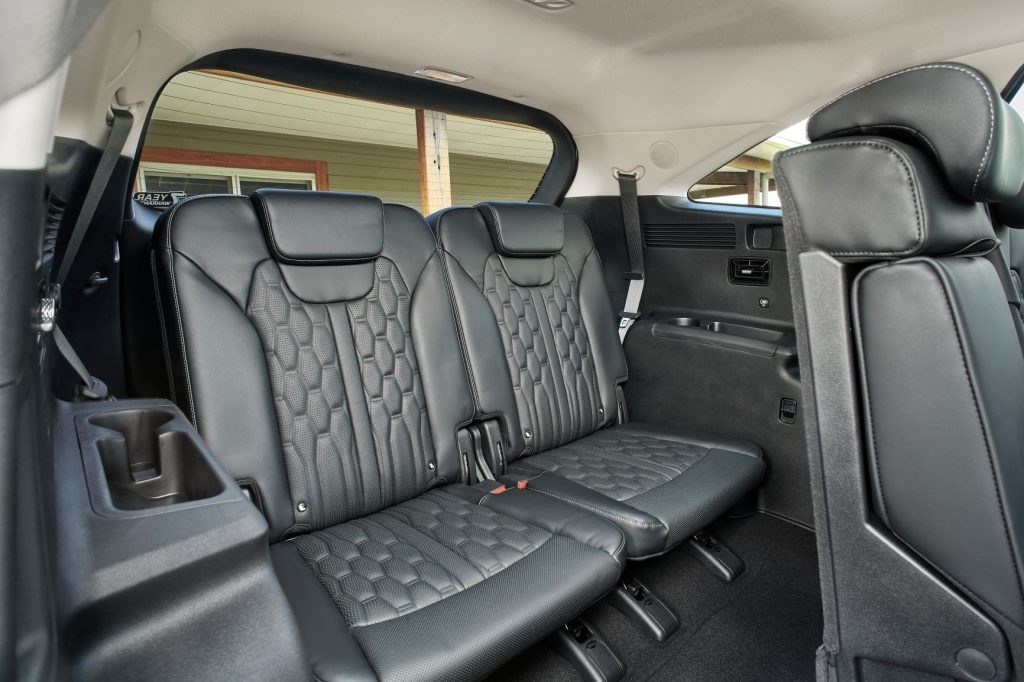
Manufactured in Korea
Like its predecessor, the new Sorento will be built for Australia at Kia’s Hwasung manufacturing facility in Korea.
As with all Kia models it will be covered by the 7-Year unlimited kilometre Warranty, 7-Year Capped Price Service and 7-Year Roadside Assist.
Pricing
| RRP | DRIVE AWAY | ||
| 2WD S Petrol AT | 3.5 Litre | $45,850 | $46,990 |
| 2WD Sport Petrol AT | 3.5 Litre | $48,470 | $49,990 |
| 2WD Sport + Petrol AT | 3.5 Litre | $52,850 | $54,390 |
| 2WD GT-Line AT | 3.5 Litre | $60,070 | $61,990 |
| 4WD S Diesel DCT | 2.2 Litre | $48,850 | $49,990 |
| 4WD Sport Diesel DCT | 2.2 Litre | $51,470 | $52,990 |
| 4WD Sport + Diesel DCT | 2.2 Litre | $55,850 | $57,390 |
| 4WD GT-Line Diesel DCT | 2.2 Litre | $63,070 | $64,990 |
| Premium Paint | $695 | $695 |
*Important Note: In the State of Western Australia, the Road Traffic Code 2000 prohibits drivers from driving a vehicle unless the driver is behind the steering wheel and they have full control over the vehicle from within the vehicle. The use of the Remote Smart Park Assist (RSPA) feature from outside the vehicle does not comply with this rule.
Kia Motors Australia will include legally approved disclaimers in all marketing collateral nationally and Owner’s Manuals will include an additional sticker inside the front cover clearly explaining the Road Traffic Code 2000.
All WA Kia dealers and new Sorento GT-Line customers will be required to sign a form acknowledging they have been made aware of their responsibilities as a dealer and/or driver under the Road Traffic Code 2000.
TECHNICAL SPECIFICATIONS
Body and chassis
Five-door, seven-seater SUV, with steel and aluminium unitary construction bodyshell. Diesel four-cylinder engine with eight-speed wet double-clutch transmission AWD or petrol V6 eight-speed automatic transmission driving the front wheels.
| Powertrain | |
| Diesel | 2.2-litre / 148kW ‘Smartstream’ CRDi diesel |
| Type | Four cylinder turbocharged in-line |
| Capacity | 2.2-litres, 2151 cc |
| Bore and stroke | 83.0 x 99.4 |
| Compression ratio | 16.0:1 |
| Max power | 148kW @ 3800 rpm |
| Max torque | 440Nm @ 1750-2750 rpm |
| Valves | 16 (four per cylinder) |
| Fuel system | Common rail direct injection |
| Petrol | 3.5-litre / 200kW ‘Smartstream’ DOHC MPI Petrol |
| Type | V6 MPI |
| Capacity | 3.5-litres, 3470 cc |
| Bore and stroke | 92 x 87 |
| Compression ratio | 10.6:1 |
| Max power | 200kW @ 6300 rpm |
| Max torque | 332Nm @ 5000 rpm |
| Valves | 24 (four per cylinder) |
| Transmissions | Eight-speed wet double-clutch transmission (8DCT) | Eight-speed automatic transmission (8AT) |
| Diesel AWD | Petrol FWD | |
| 8DCT | Standard | – |
| 8AT | – | Standard |
| Suspension and damping | |
| Front | Fully-independent by subframe-mounted MacPherson struts, coil springs and gas-filled shock absorbers, with anti-roll stabiliser bar |
| Rear | Fully-independent by subframe-mounted double wishbones, coil springs and gas-filled shock absorbers, with anti-roll stabiliser bar |
| Wheels and tyres | |
| S | Alloy 17-inch, 235/65 R17 tyres |
| Sport | Alloy 18-inch, 235/60 R18 tyres |
| Sport+ | Alloy 19-inch, 235/55 R19 tyres |
| GT-Line | Alloy 20-inch, 255/45 R20 tyres |
| Spare | Spare Full size alloy |
| Dimensions | (mm) |
| Exterior | |
| Overall length | 4810 |
| Overall height | 1700 |
| Overall width* | 1900 |
| Wheelbase | 2815 |
| Front overhang | 930 |
| Rear overhang | 1065 |
| Ground clearance | 176 |
| *excluding door mirrors |
| Interior | |||
| 1st row | 2nd row | 3rd row | |
| Head room | 1024 | 994 | 935 |
| Leg room | 1052 | 1060 | 752 |
| Shoulder room | 1500 | 1475 | 1345 |
| Hip room | 1411 | 1399 | 1080 |
Once we have tested and assessed the new Kia Sorento, seniordriveraus will bring you a comprehensive review, including everything the over-50 driver needs to know.
